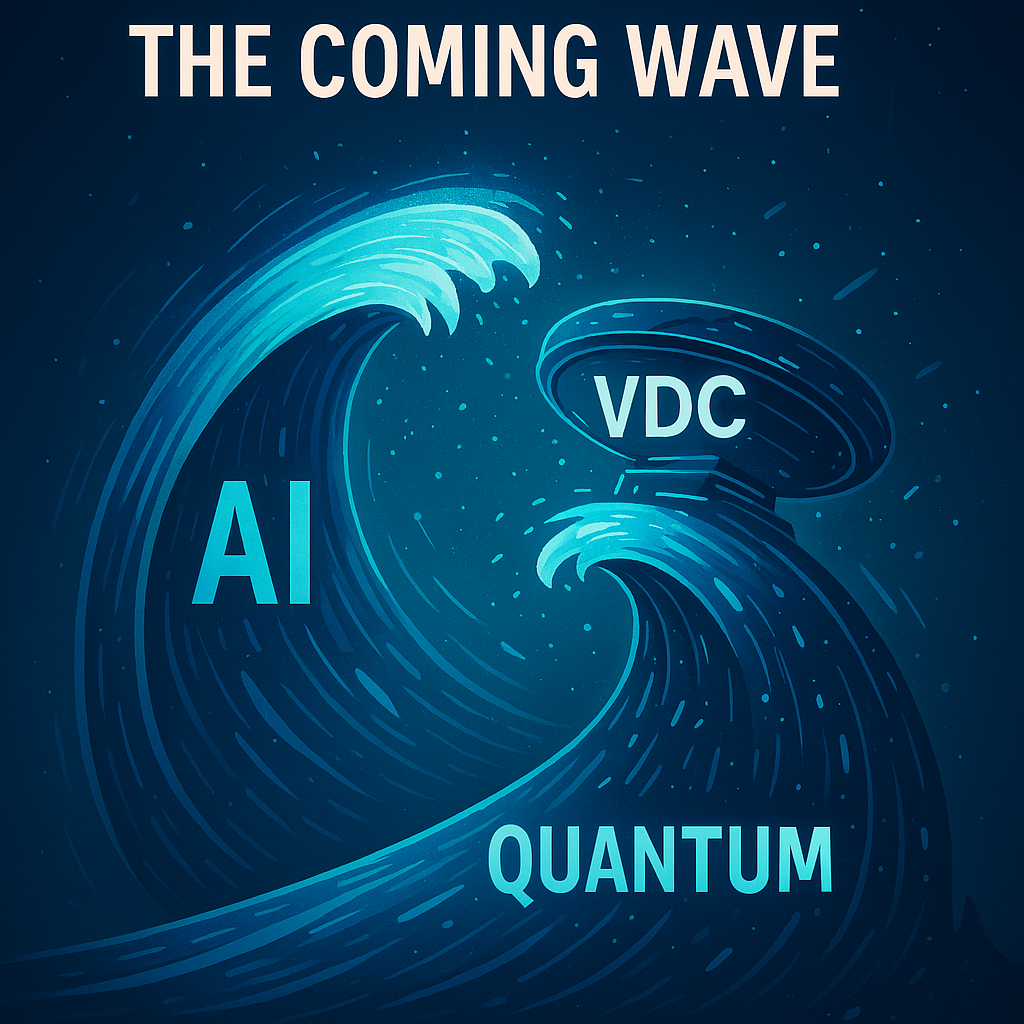Exponential Change: How AI and Quantum Tech Will Rewrite the Economy

Two years ago, most executives still debated whether AI was hype or future. Today, that debate is over. AI isn’t just another tool; it's reshaping industries from marketing and logistics to finance and software engineering. ChatGPT opened the floodgates. Google’s Gemini expanded the boundaries. And China's DeepSeek proved that power doesn't need deep pockets.
It’s not just that AI is improving – it’s accelerating. Each new generation of models trains faster, costs less, and does more. And the rate of change isn’t linear – it's exponential. What used to take years now happens in months. The concept of "cutting edge" has a shelf life shorter than a quarterly roadmap.
Entire job categories are disappearing. Customer support, copywriting, design, coding – all being transformed. If you’re not integrating AI into your workflows, someone else is – and faster than you think.
Just as businesses begin to adjust to AI, another seismic wave is building momentum: Quantum Computing.
Google’s Willow chip claims to be 10 septillion times faster than the world's fastest supercomputer. Microsoft, Amazon, and others are racing to launch their own quantum architectures. This isn’t theoretical anymore. It’s real, and it’s arriving sooner than most realize.
Quantum will redefine what’s possible. It will:
Break today's encryption standards
Accelerate drug discovery by decades
Rewire financial modeling and portfolio simulation
Collapse AI training times from weeks to minutes
And unlike AI, which needed years of public trust-building, quantum will piggyback on AI’s adoption momentum. The leap from GPT to QAI (Quantum AI) will be far shorter than anyone expects.
The coming decade won’t be about competition between companies – it will be a war of business models.
Winners:
Startups native to AI and quantum ecosystems
Enterprises who adapt their workforce, processes, and delivery models
Investors who reallocate capital toward high-leverage tech plays
Infrastructure providers: data centers, GPUs, quantum cloud platforms
Losers:
Traditional employers clinging to full-time staffing models
Companies that delay automation or AI/ML integration
Talent dependent on static skillsets instead of adaptive learning
Already, we see entire verticals shifting. Legal research, compliance monitoring, medical diagnostics, and even film production are being rewritten. Waiting means obsolescence.
The real story isn’t just job loss. It’s infrastructure transformation.
The global enterprise was built on the assumption of predictable labor, centralized offices, and quarterly innovation. That foundation no longer holds. AI has commoditized certain skills. Quantum will soon commoditize compute. The friction of building things has dropped so dramatically that old models of delivery feel painfully slow.
Talent isn’t disappearing – it’s decoupling.
From geography
From full-time employment
From org chart hierarchies
The winners aren’t just those who hire fast or cheap. The winners are those who restructure how work gets done.
In this new world, the Virtual Delivery Center (VDC) becomes the operating model of the future.
What is a VDC? A VDC is a plug-and-play execution engine for enterprises. It is not a talent marketplace or a freelance hub. It’s an always-on, cloud-native delivery center powered by distributed teams, automated workflows, and on-demand specialization.
Why VDCs win in the AI + Quantum Era:
Modular Delivery: Spin up a project, module, or PoC without hiring overhead.
Elastic Talent: Tap global specialists without HR bottlenecks.
Speed to Value: AI-native and automation-driven from day zero.
Risk Mitigation: No long-term commitments, full control.
VDCs mirror the principles that AI and Quantum embody: scalability, speed, decentralization, and precision.
At AiDOOS, we’re building VDCs that allow enterprises to keep the core in-house while outsourcing execution to the cloud – safely, scalably, and securely.
This isn’t a prediction piece. It’s a strategic roadmap.
Here’s how to act:
Audit your exposure: Which functions can be VDC-enabled today?
Up-skill for orchestration: The future belongs to those who can integrate AI + Quantum into business models.
De-risk legacy teams: Move from fixed cost to variable delivery via Virtual Delivery Centers.
Experiment, quickly: Build 3-week sprint pilots using VDCs to validate fast.
You don’t need a five-year plan. You need a five-week experiment. Then another. And another.
What cloud did to servers, what SaaS did to software, VDCs are doing to human delivery.
Fixed teams? Replaced by modular squads.
Office buildings? Replaced by virtual sprints.
Month-long onboarding? Replaced by day-one delivery.
The Virtual Delivery Center is not just a model. It is a meta-infrastructure for enterprise agility in the age of exponential technology.
You can either build one, rent one, or be left behind.
The Tsunami Has Arrived. What Will You Build With It?
We don’t get to slow the waves. But we do get to choose whether we drown, drift, or surf.
The companies that survive will be those who realize: The tsunami isn’t just coming. It’s already here. And the VDC is your surfboard.

The tech job market is collapsing. Ghost postings, AI replacement, and Gen Z disillusionment are converging into a workplace crisis. Discover why it's time to rethink talent, employment, and the future of work through the lens of the Virtual Delivery Center (VDC) model.